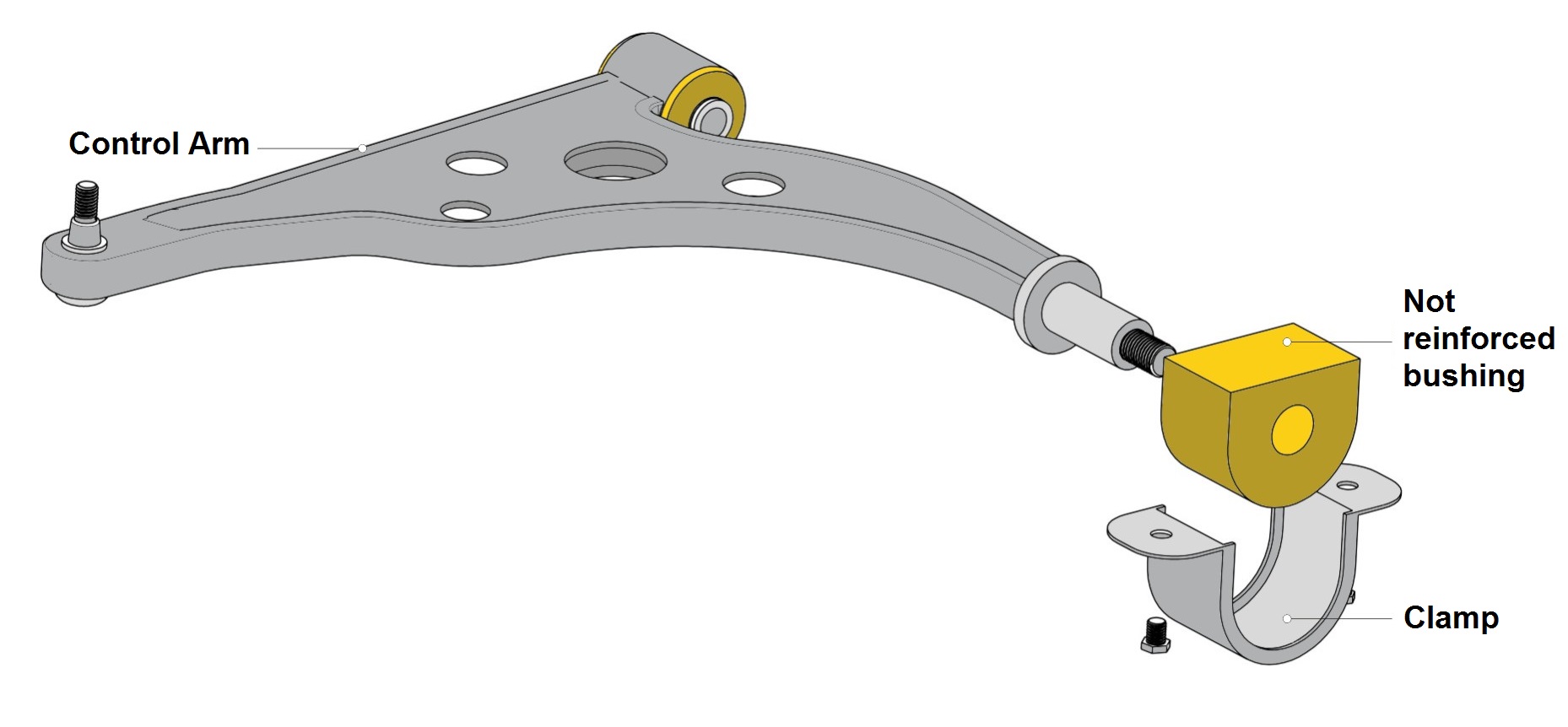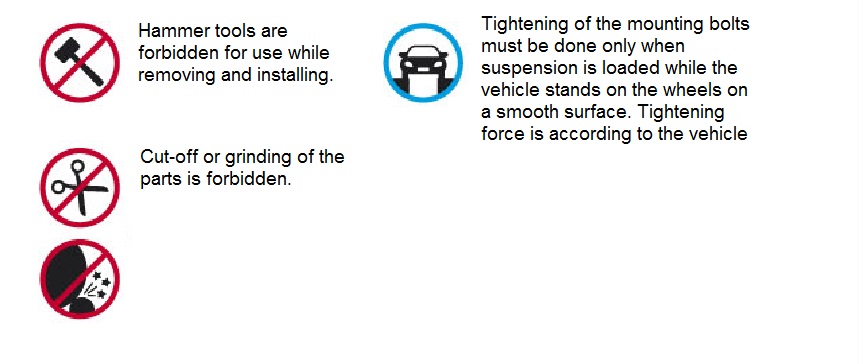Attention! Some bushings have modified design, in comparison with the original. For example, the original bushing has an inner metal sleeve, but the bushing that is manufactured by Fulcrum Co.Ltd. can be made without it. The diameter of the inner hole is smaller than outer diameter of the bearing on the arm – this allows to fix an arm due to the elastic deformation of bushing’s body. These changes allow to use of the properties of the elastomer better.
Dismantling
- Remove the worn out bushing from the arm together with inner metal sleeve by any suitable way (fig.1).
- Clean the bearing from rust and dirt.
- Clean the bearing from teasers and burrs. Cleanness of the bearing is the key to long-term operation of our details.
Installation
- Lubricate the inner hole of the bushing and bearing on the arm with the grease supplied in the kit, or any other consistent grease. Attention! Do not apply grease to the outer surface of the bushing. Otherwise bushing can not be reliably fixed in suspension.
- Install the bushing in the arm.
- The force is applied to the rear end of the bushing (Figure 2). The difference between diameters of the bushing’s inner hole and the bearing on the arm provide a tight fixation.

Attention! The tightening of the fixing bolts must be performed on the loaded suspension, when car stands on wheels on the plain surface. Tightening force is according to the manufacturer’s recommendations.
Attention! After the replacement of the bushings it is necessary to perform the wheels alignment.


